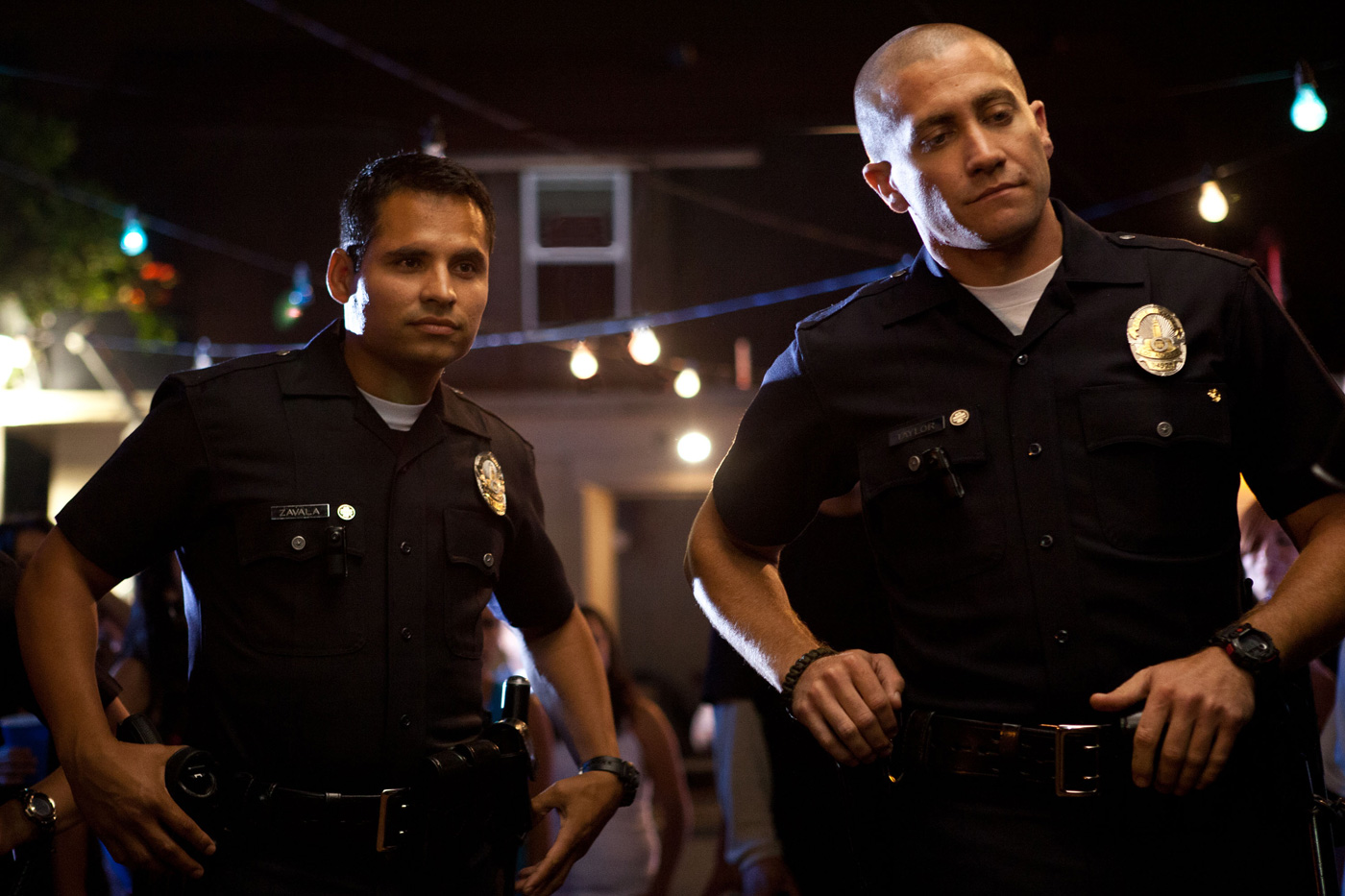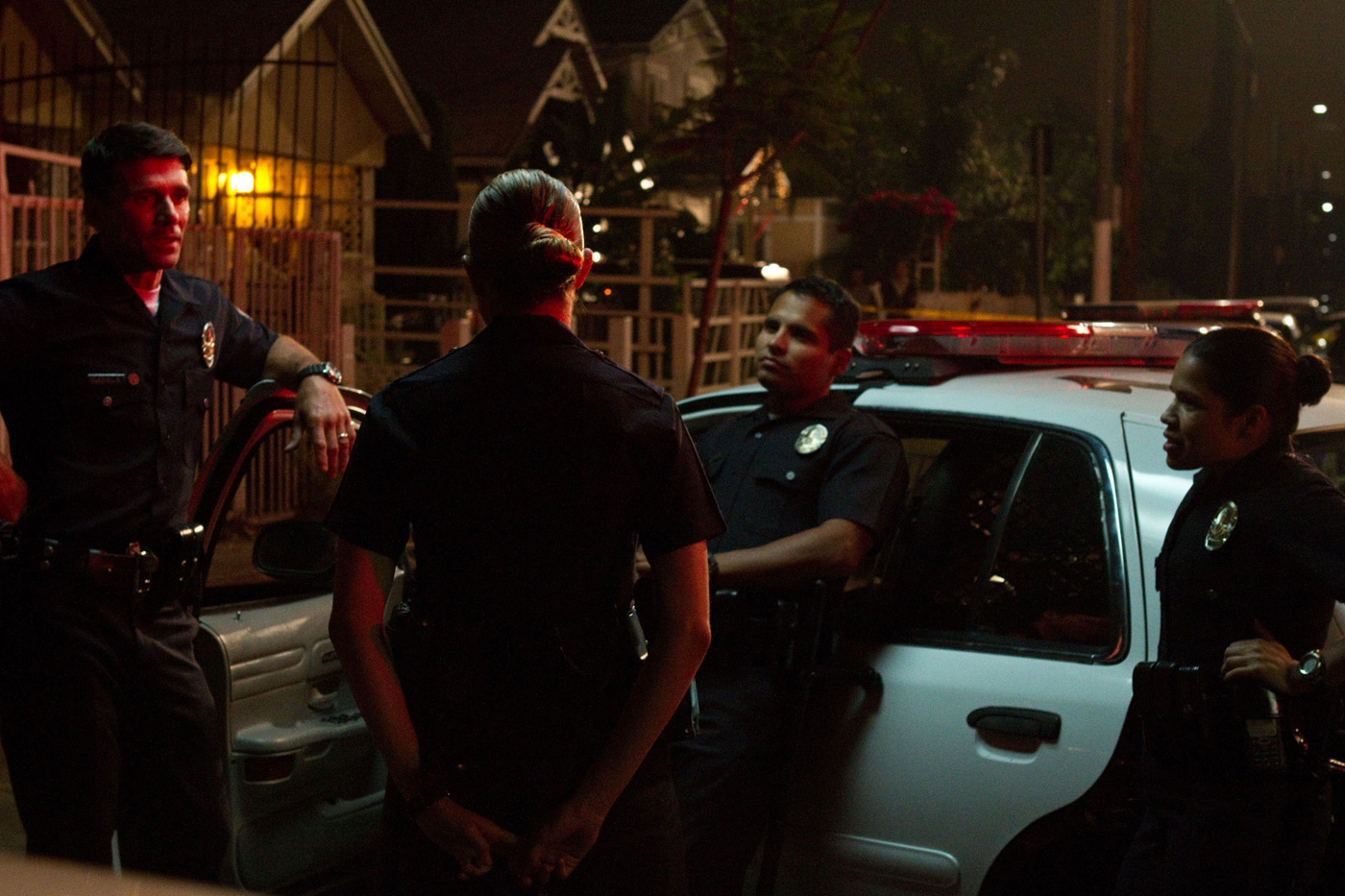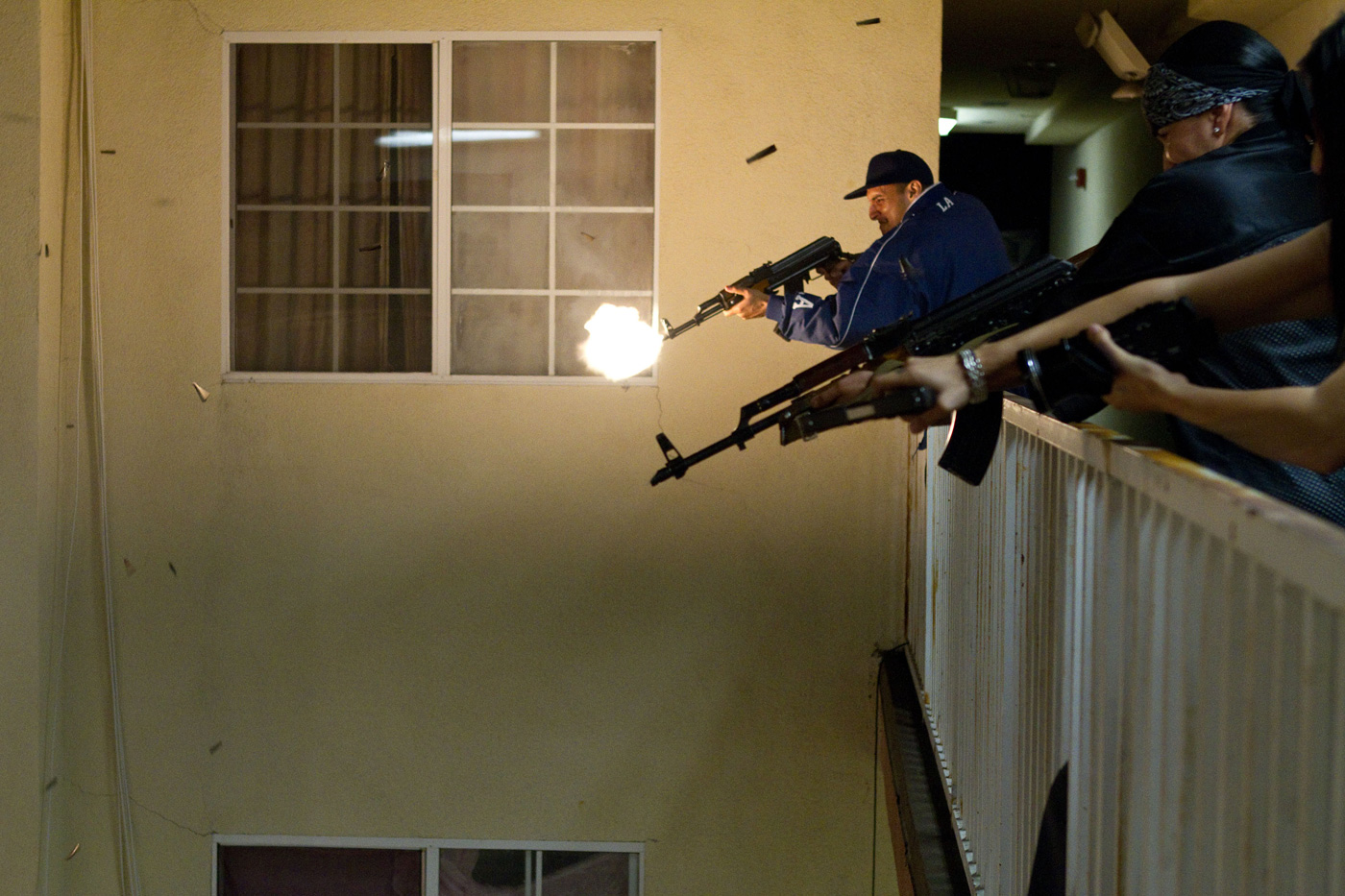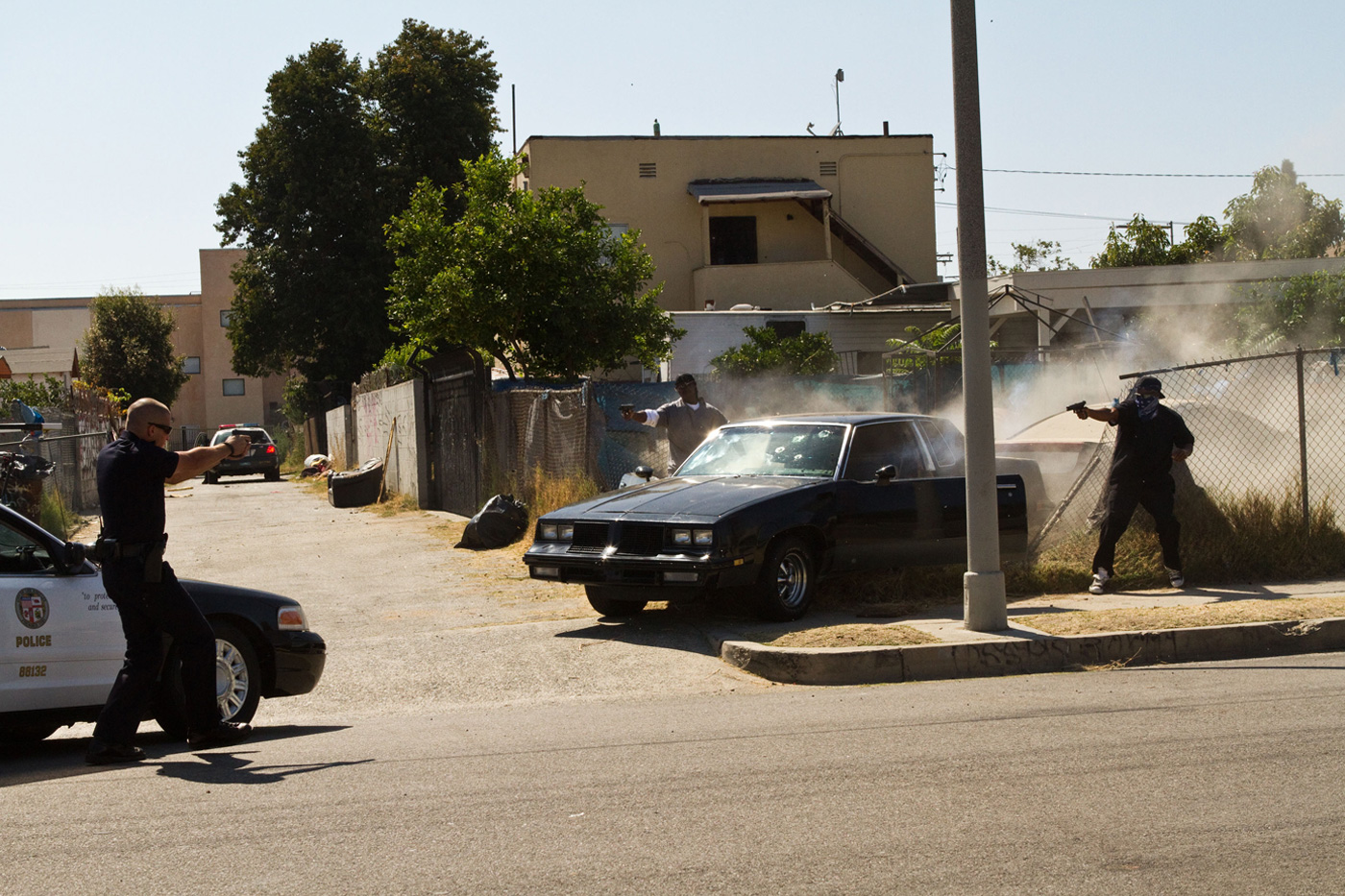Adam Avitabile has explained to us the visual effects of Look Effects on the season finale of LOST. Then he worked on projects like LIMITLESS, FAST FIVE or THE MUPPETS.
How did Look Effects get involved on this show?
We were contacted by the producers of the movie who had been impressed by some of our earlier work.
What were the expectations of director David Ayer about the visual effects?
David’s main goal was to keep the effects grounded in as much reality as possible. END OF WATCH is not the kind of movie that required flashy, over-the-top effects. Our job was to enhance the movie’s gritty realism when needed and to help solve the problems that arise when shooting a movie like this.
Can you tell us in details about your collaboration with him?
David was great to work with. He had a very clear idea of what he wanted and was able to relay that to myself and the artists in great detail. Since the majority of the effects we did for END OF WATCH had to do with gunfights between the police and various gang members, David really wanted our work to be as accurate as possible. He has an amazing personal and working relationship with various members of law enforcement, and was able to use this knowledge to steer us in the right directions.
Can you explain to us how you help the story with the VFX?
Many parts of END OF WATCH show how dangerous and violent being a police officer can be. Our job was to amp up these moments to show the utter chaos that can happen while on the job in a safe way for the actors.
Does the handheld shooting causes you some troubles?
Absolutely. Not only was the majority of the movie shot handheld, some of the cameras that were used had CMOS sensors. That means that instead of a single image being captured as a whole, it is recorded from top of frame down. What this leads to is what is sometimes referred to as “jelly cam”. The image won’t move as a cohesive whole, but rather parts of the image will move independently of other parts. This makes it very difficult to track anything to the footage. There are ways to get around this problem, but it definitely makes things more complicated.
How did you enhance the various gunfights?
There were many moments where we needed to add muzzle flashes and interactive light to the tense gun battles. Going back to the issues of filming with CMOS sensors, sometimes the practical muzzle flashes captured came out cut off. The camera starts to record the image from the top down, so the top of the muzzle flash might be there, but the bottom would not. David actually took a liking to the look of this, so we were tasked to recreate the look.
Can you tell us more about your work on the bloody aspects of the movie?
I actually remember having a conversation with David about how many skull fragments we were to create coming out of one poor fellow’s skull after an unfortunate bullet wound to the head. There was always a call to increase the gore factor when it made sense. We created bullet holes in eye sockets, chest wounds and arm and leg hits. We used a number of filmed blood elements we already had from various other projects and composited them into the scenes, adding colored smoke elements as well to create a blood mist. All in all, there was a ton of blood being thrown around.
The movie is seen through various cameras and videos. How did you manage this aspect?
Thankfully, the not-so-inconsequential task of wrangling all the various camera formats was done mostly by the editorial staff. Our main job was to match the look of whatever footage we were given, regardless of the source.
Have you made some clean up work such as crew removal?
Being that this was mostly a handheld movie, some being chest-mounted cameras worn by actors, there was always some unwanted element to remove. The camera just moved around too much to hide everything. Anything from crew members, lights, rigs and crew equipment had to be taken out.
Is there any other invisible effects that you want to reveal to us?
There weren’t too many invisible effects going on, except for removing the unwanted elements mentioned above, but one I can think of had to do with a car chase towards the beginning of the movie. The view is seen through the dash cam of the main actor’s police cruiser that is chasing down a suspect vehicle. After many twists and turns, the police officers force the car to the side of the road, where the suspects exit the vehicle and are gunned down by the officers. Since this was a bit of a long chase, it didn’t make sense to have the actors playing the suspects be in the car. David decided to have two identical cars for this scene. One that was being driven by a precision driver and one that had the actors in it parked on the side of the road. When the stunt car got close to the point that the shoot-out was supposed to occur, the driver made a sharp turn out of frame for a second. This is the point that the sister car drove into frame and crashed into a nearby fence, letting the actors spill out. What we did was color-correct the waiting car so that the audience didn’t notice it as the chase car pulled up. A couple of frames later, the first car pulls away, the color-corrected car (now back to it¹s original color) pulls in, and no one is the wiser. Switcheroo!
What was the biggest challenge on this project and how did you achieve it?
I think the biggest challenge was trying to match the look of the various formats we were being delivered. From hi-res digital footage, to consumer level CMOS sensor issues. It all had to look seamless. We, in the effects world, are always striving to make things look as pristine as possible, but sometimes trying to degrade images to match a format is very difficult.
Was there a shot or sequence that prevented you from sleep?
There have been many projects that I have been involved with that I have lost countless hours of sleep from, but thankfully this was not one of them. For the most part, this went very smoothly. David had very clear direction and we were able to meet his expectations without much fuss.
What do you keep from this experience?
I think that working on END OF WATCH helped me to understand a tiny bit more what it is like to be a police officer in a major city. Obviously, you can pick some of this up by just watching the movie, but after the many conversations with David and the stories he would tell about some of his friends on the Force, it opened my eyes to what an intense life it must be.
How long have you worked on this film?
I think when it was all said and done, we worked on this movie for about 3 months.
How many shots have you done?
I believe that we delivered somewhere around 150 shots for END OF WATCH.
What was the size of your team?
There were about 10 artists working on this movie.
What is your next project?
I’m a little in-between projects right now, but TV pilot season is right around the corner and things always heat up around then.
A big thanks for your time.
// WANT TO KNOW MORE?
– Look Effects: Official website of Look Effects.
© Vincent Frei – The Art of VFX – 2012










